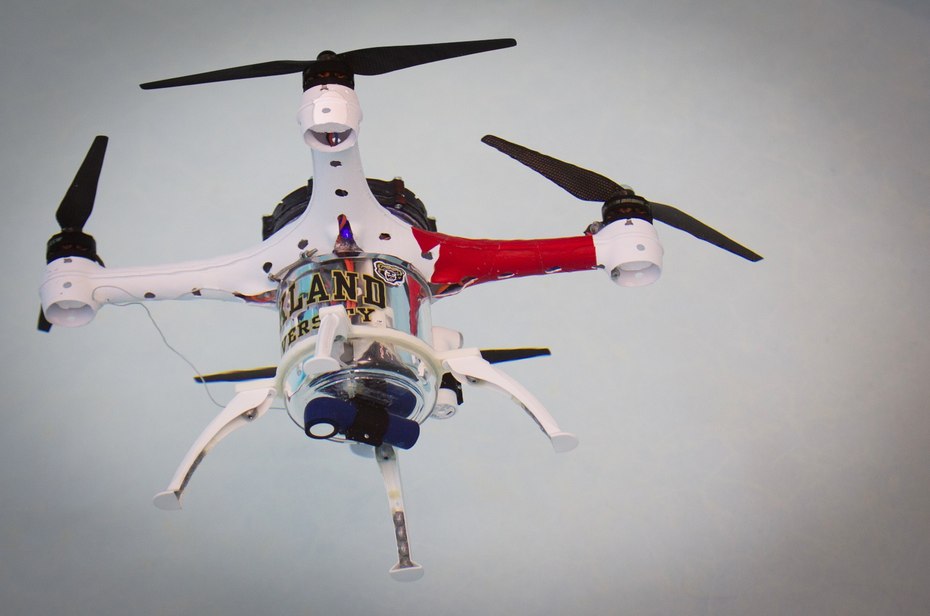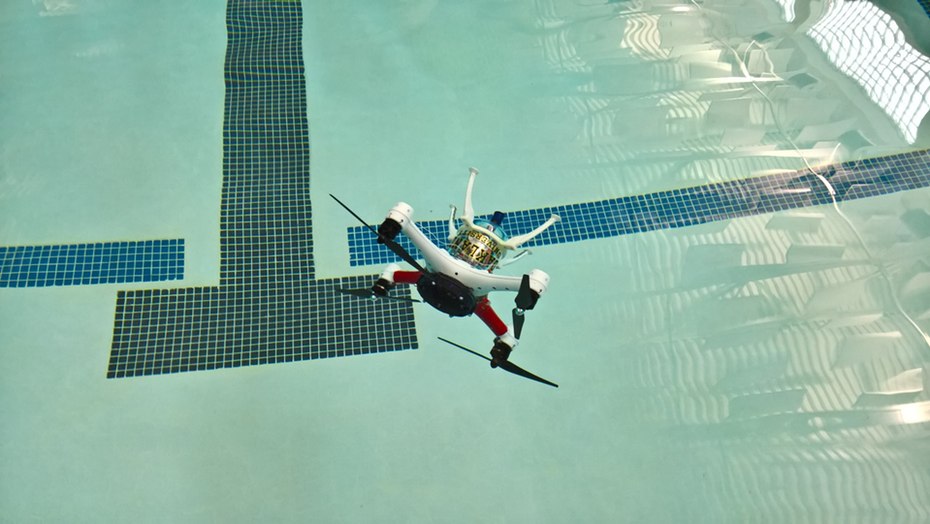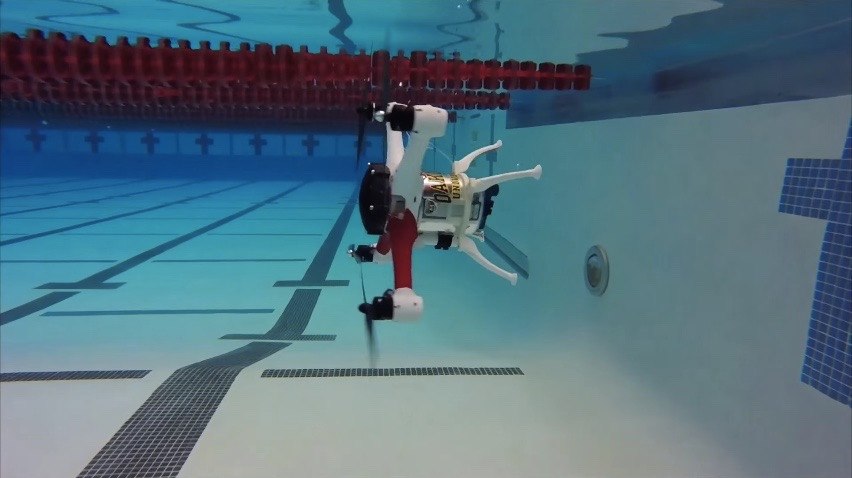
With the increasing popularity of drones as toys and potentially even for commercial delivery, researchers are going all out to build cooler and more sophisticated quadcopters. However, none can compare to the Loon Copter, which not only flies like a bird, but also swims like a fish!
Conceived by Dr. Osamah Rawashdeh and his team at Oakland University’s Embedded Systems Research Laboratory, the Loon Copter looks and flies just like any other drone. The fun part comes when it lands on water, where it can be remotely controlled to stand still, skim the surface or best of all, instructed to dive in.
When this happens, the drone's buoyancy chamber draws in water that makes it heavy enough to sink. But instead of plummeting straight down, the drone tilts at a 90-degree angle and then uses its propellers to 'swim' underwater. Once it has reached the desired depth, the propellers shut down, and a water ballast system takes over. By pumping water in and out of the chamber, it allows the Loon Copter to swim in different directions, go down to further depths and also, return to the surface.

Using a ballast system rather than propellers makes the Loon Copter less susceptible to colliding with nearby objects. It also helps reduce the drone's power usage both when it is resting on the water surface and maneuvering its way underneath.
Cool as it is the Loon Copter, which is still just a prototype, has some limitations. It can only be remotely controlled from a short distance. The drone is also unable to transmit live video feeds. The research team is working on fixing the issues. Dr. Rawashdeh believes that when ready, the Loon Copter can be used for a number of varied applications, including search-and-rescue operations, bridge or underwater pipeline inspections and even to study marine life.
On February 6, the researchers won the 'UAE Drones for Good Award.' The honor, which comes with a $1 million USD prize, is the world's biggest award in civilian applications of drones and robotics technology.

The Oakland University team is not the only group working on an air-and-sea drone. Scientists at the Georgia Institute of Technology and Rutgers University are trying to build similar quadcopters. However, none is as advanced as the Loon Copter. Georgia Tech's GTQ-Cormorant can only move up and down in the water, while Rutger’s Navigator is unable to float and relies wholly on propellers when underneath the water.
Resources: gizmag.com, oakland.edu,